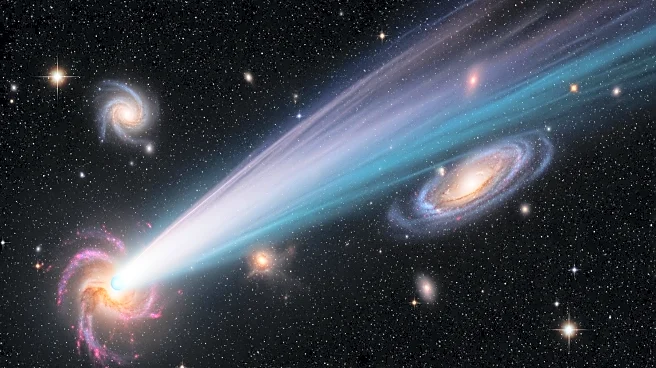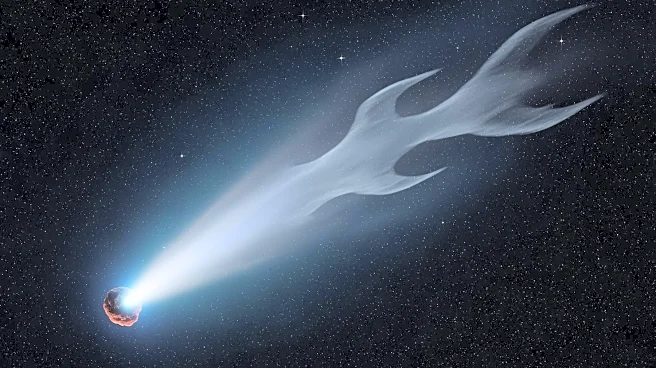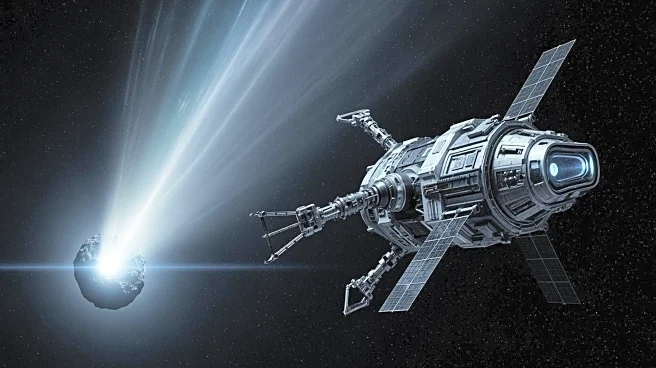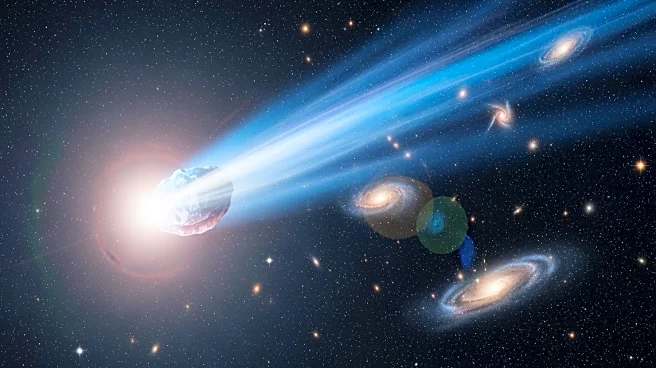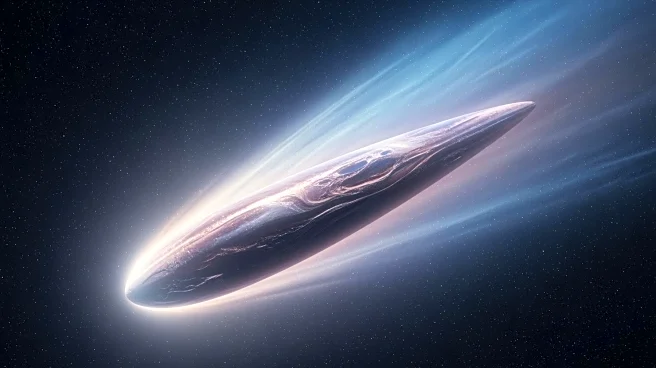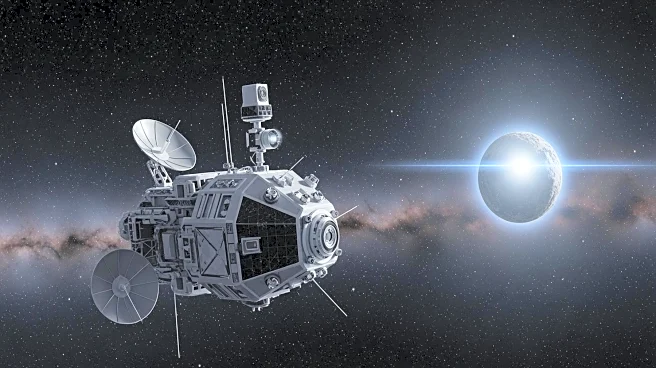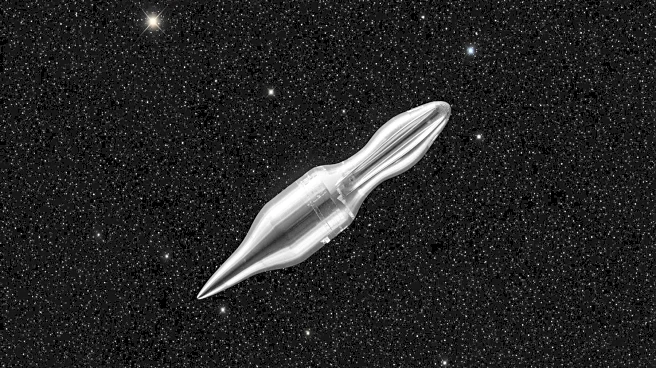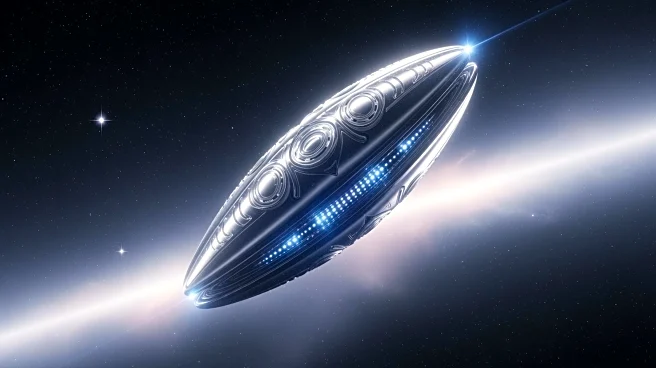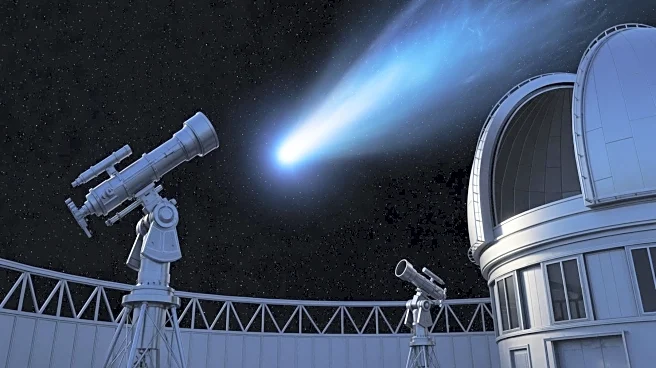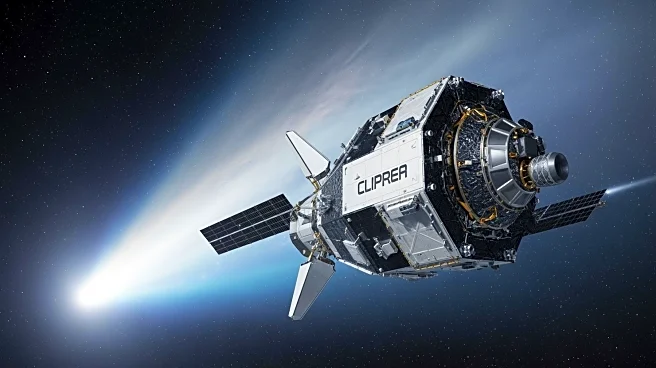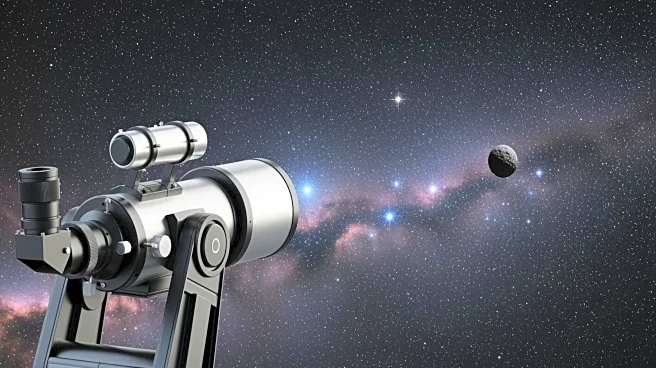What's Happening?
The interstellar comet 3I/ATLAS, discovered on July 1, 2025, by the ATLAS survey, is the third known object from beyond our Solar System. It has a highly hyperbolic orbit and is moving at approximately 58 km/s, confirming it is unbound to the Sun. The comet will
not come closer than about 1.8 AU to Earth and will reach its closest point to the Sun on October 29-30, 2025. NASA and ESA have emphasized that the comet's path is benign and poses no danger to Earth. Early images from the Hubble Space Telescope show the comet is actively outgassing volatiles, with a solid nucleus estimated to be between 0.44 and 5.6 km across. Infrared spectra from the James Webb Space Telescope reveal a coma rich in CO2 and water ice, suggesting the comet formed in a carbon-rich environment and could be over 7 billion years old.
Why It's Important?
The observation of 3I/ATLAS provides a rare opportunity for scientists to study an interstellar visitor, offering insights into conditions in other solar systems. The comet's composition, particularly its high CO2-to-H2O ratio, suggests it originated in a carbon-rich environment, potentially predating our Sun. This discovery allows researchers to explore the chemical makeup and formation processes of celestial bodies from outside our solar system. The comet's trajectory and behavior are being closely monitored by a fleet of telescopes, including ESA's Mars Express and ExoMars orbiters, NASA's Hubble and James Webb Space Telescopes, and ground observatories.
What's Next?
In November 2025, ESA's JUICE probe will observe the comet post-perihelion. Additionally, ESA's Hera and NASA's Europa Clipper spacecraft will pass through the comet's tail, potentially sampling ions from the interstellar visitor. These observations will help scientists understand the comet's post-Sun encounter changes and provide further data on its composition and behavior. The ongoing monitoring and analysis of 3I/ATLAS will continue to contribute to our understanding of interstellar objects and their impact on our knowledge of the universe.
Beyond the Headlines
The study of 3I/ATLAS not only enhances our understanding of interstellar objects but also challenges sensational claims about alien technology. NASA and ESA have publicly debunked such claims, emphasizing the comet's normal behavior and scientific value. The comet's activity, attributed to solar heating of ices, provides a window into conditions in another solar system, reinforcing the importance of scientific inquiry over speculative theories.
